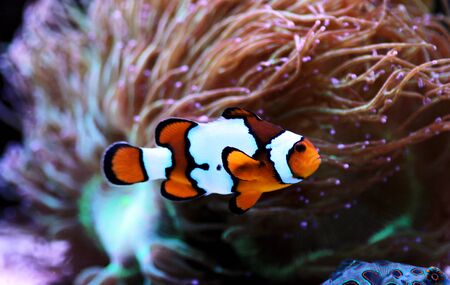1. Choosing the Right Tank and Equipment
Setting up a freshwater aquarium starts with choosing the right tank and equipment. The size of your tank, the type of filtration system, heating, and lighting all play a crucial role in maintaining a healthy environment for your fish.
Types of Freshwater Aquariums
Before selecting a tank, its important to understand the different types of freshwater aquariums available:
- Community Tank: A mix of peaceful fish species that coexist well together.
- Species-Only Tank: Dedicated to one species, often for breeding or specialized care.
- Planted Tank: Focuses on live plants with fish that thrive in a planted environment.
- Cichlid Tank: Designed for cichlids, which may require specific water conditions and territorial space.
Choosing the Right Tank Size
The size of your aquarium depends on the number and type of fish you plan to keep. A larger tank provides better stability in water parameters, making it easier to maintain. Below is a general guide for common tank sizes:
| Tank Size (Gallons) | Dimensions (Inches) | Recommended Use |
|---|---|---|
| 10 Gallons | 20″ x 10″ x 12″ | Good for beginners, small fish like tetras or bettas. |
| 20 Gallons | 24″ x 12″ x 16″ | A great starting point for more variety in fish selection. |
| 40 Gallons | 36″ x 18″ x 16″ | Suits larger or more active fish like gouramis or barbs. |
| 75 Gallons | 48″ x 18″ x 21″ | Ideal for larger fish species or a diverse community setup. |
Essential Equipment for Your Aquarium
A successful freshwater aquarium requires key pieces of equipment to maintain water quality and ensure your fish thrive:
Aquarium Filter
A filter helps remove waste, toxins, and debris from the water. Common types include:
- Sponge Filters: Ideal for small tanks and fry tanks.
- Hang-On-Back (HOB) Filters: Easy to maintain and suitable for most beginner setups.
- Canister Filters: Best for larger tanks with high filtration needs.
- Internal Filters: Submersible filters that work well in smaller setups.
Aquarium Heater
If youre keeping tropical freshwater fish, youll need a heater to maintain stable water temperature. Consider these factors when choosing a heater:
- Tank Size: Larger tanks require higher wattage heaters.
- Thermostat Control:
- Safety Features:
Aquarium Lighting
Adequate lighting is essential not only for aesthetics but also for plant growth if you have a planted tank. Options include:
- LED Lights:: Energy-efficient, long-lasting, and customizable brightness/color options.
- T5/T8 Fluorescent Lights:: Good for planted tanks but less efficient than LEDs.
- CFL Bulbs:: Compact fluorescent lights that provide decent illumination at an affordable price.
Selecting Substrate and Decorations
Your choice of substrate depends on whether youre keeping live plants or not. Common substrates include gravel, sand, and nutrient-rich plant substrates. Adding decorations like rocks, driftwood, and caves can create hiding spots for fish while enhancing the visual appeal of your aquarium.
Selecting the right tank size and equipment is the foundation of a successful freshwater aquarium. In the next section, well explore how to properly set up your tank before introducing fish into their new home.
2. Setting Up the Aquarium
Now that you have all your supplies ready, its time to set up your freshwater aquarium! Follow these steps to ensure a smooth and successful setup.
Step 1: Choosing the Right Location
Pick a stable, level surface away from direct sunlight, vents, and high-traffic areas. Too much light can lead to excessive algae growth, while drafts or vibrations can stress your fish.
Step 2: Adding the Substrate
The substrate is essential for both aesthetics and beneficial bacteria growth. Rinse the substrate thoroughly before adding it to remove dust and debris. Spread it evenly across the bottom of the tank, aiming for a depth of about 1-2 inches for basic setups or 2-3 inches if youre planting live plants.
Recommended Substrate Types
| Type | Best For |
|---|---|
| Gravel | General freshwater tanks, easy maintenance |
| Sand | Bottom-dwelling fish like corydoras and loaches |
| Aquarium Soil | Planted tanks for better plant growth |
Step 3: Decorating with Plants and Ornaments
Add decorations such as rocks, driftwood, and caves to create hiding spots and a natural environment. If using live plants, plant them securely in the substrate. Arrange everything before adding water to avoid unnecessary disturbances.
Decoration Tips
- Avoid sharp objects that could injure your fish.
- Create open swimming spaces as well as hiding spots.
- If using artificial decorations, rinse them well before placing them in the tank.
Step 4: Filling the Tank with Water
Use dechlorinated water to fill your tank slowly. To prevent disturbing the substrate, pour water onto a plate or bowl placed inside the tank. Fill it up to about an inch below the rim.
Treating Tap Water
If using tap water, add a water conditioner to remove chlorine and harmful chemicals before introducing any fish.

3. The Nitrogen Cycle and Water Conditioning
Before adding fish to your freshwater aquarium, its crucial to understand the nitrogen cycle. This natural process helps establish a healthy environment by breaking down fish waste and uneaten food into less harmful substances. Without a properly cycled tank, your fish could suffer from toxic ammonia and nitrite spikes.
Understanding the Nitrogen Cycle
The nitrogen cycle consists of three main stages:
| Stage | Description |
|---|---|
| Ammonia (NH3/NH4+) | Fish waste, uneaten food, and decaying plants release ammonia into the water. Ammonia is highly toxic to fish. |
| Nitrite (NO2-) | Bacteria known as Nitrosomonas convert ammonia into nitrites. Although less toxic than ammonia, nitrites can still harm fish. |
| Nitrate (NO3-) | Bacteria called Nitrobacter further break down nitrites into nitrates. Nitrates are much less harmful but should be kept at low levels through regular water changes. |
Cycling Your Tank Before Adding Fish
Cycling your tank means allowing beneficial bacteria to establish before introducing fish. There are two common methods:
Fishless Cycling
- Add a source of ammonia, such as pure ammonia drops or fish food.
- Use a test kit to monitor ammonia, nitrite, and nitrate levels.
- The cycle is complete when ammonia and nitrite levels reach zero while nitrates are present.
Cycling with Fish (Not Recommended)
This method involves adding hardy fish to produce waste while bacteria develop naturally. However, it can be stressful for the fish due to toxin exposure.
Testing and Maintaining Water Parameters
A well-maintained aquarium requires regular water testing to ensure safe conditions for your fish. Here are key parameters to monitor:
| Parameter | Ideal Range | Description |
|---|---|---|
| Ammonia (NH3/NH4+) | < 0.1 ppm | Toxic even in small amounts; should always be near zero. |
| Nitrite (NO2-) | < 0.5 ppm | Toxic to fish; should be close to zero in a fully cycled tank. |
| Nitrate (NO3-) | < 20 ppm | A byproduct of the nitrogen cycle; controlled with water changes. |
| pH Level | 6.5 – 7.5 (varies by species) | Affects fish health; stability is more important than hitting an exact number. |
| Temperature | 72 – 82°F (22 – 28°C) | Aquarium heaters help maintain stable temperatures suitable for tropical fish. |
The Role of Water Conditioners
Tap water contains chlorine and chloramines that can harm fish and beneficial bacteria. A quality water conditioner removes these chemicals and detoxifies heavy metals, making the water safe for aquarium use.
Selecting a Water Conditioner
- Main Function: Neutralizes chlorine, chloramine, and harmful metals.
- Additives: Some include stress coat boosters or beneficial bacteria.
- Dosing: Follow the manufacturer’s instructions based on your tank size.
Troubleshooting Common Cycling Issues
If Ammonia Stays High:
- Avoid overfeeding and remove uneaten food promptly.
- Add beneficial bacteria supplements to speed up cycling.
- If necessary, perform small partial water changes without disrupting bacterial growth.
If Nitrites Spike Suddenly:
- This is normal during cycling but can be dangerous for fish if too high.
- Add live plants or increase aeration to support bacteria growth.
- Avoid adding new fish until nitrites drop to safe levels.
If Nitrates Are Too High:
- Nitrates build up over time and should be controlled with regular water changes.
- Add live plants to help absorb excess nitrates naturally.
- Avoid overstocking your tank with too many fish.
Cycling your aquarium is one of the most important steps in setting up a healthy environment for your fish. By understanding the nitrogen cycle, testing water regularly, and using proper conditioners, you’ll create a stable habitat where your aquatic pets can thrive!
4. Choosing the Right Fish
Selecting the right fish is one of the most exciting parts of setting up a freshwater aquarium. However, choosing compatible species is crucial for maintaining a healthy and balanced tank. Here’s what you need to know to make the best choices.
Understanding Compatibility
Not all fish get along with each other. Some species are peaceful and thrive in community tanks, while others are aggressive or territorial. When selecting fish, consider their temperament, size, and environmental needs.
Key Factors for Compatibility:
- Temperament: Avoid mixing aggressive species with peaceful ones.
- Size: Larger fish may see smaller ones as food.
- Water Conditions: Ensure all chosen fish thrive in similar temperature and pH levels.
- Swimming Level: Choose fish that occupy different levels of the tank (top, middle, bottom) to prevent overcrowding.
Beginner-Friendly Fish Species
If youre new to aquariums, starting with hardy, low-maintenance fish is the best approach. Here are some excellent choices for beginners:
| Fish Species | Temperament | Water Temperature | Tank Size Requirement |
|---|---|---|---|
| Guppies | Peaceful | 72-82°F (22-28°C) | 10 gallons+ |
| Tetras (Neon, Cardinal) | Peaceful | 70-81°F (21-27°C) | 10 gallons+ |
| Mollies | Semi-Peaceful | 72-78°F (22-26°C) | 20 gallons+ |
| Zebra Danios | Lively but Peaceful | 65-77°F (18-25°C) | 10 gallons+ |
| Corydoras Catfish | Bottom Dweller, Peaceful | 72-78°F (22-26°C) | 15 gallons+ |
| Bettas (Male Alone) | Aggressive (toward other males), Peaceful with non-fin-nipping species | 76-82°F (24-28°C) | 5 gallons+ |
Avoid Overcrowding Your Tank
A common mistake among beginners is adding too many fish at once. Overcrowding leads to poor water quality and stressed fish. A general rule is “one inch of fish per gallon of water,” though this varies by species.
The Importance of Schooling Fish
Certain species, like tetras and danios, thrive in groups. If you plan to keep schooling fish, ensure you have at least six or more of the same species, as they feel more secure and display natural behaviors when kept together.
Selecting Healthy Fish from the Store
No matter how carefully you choose your species, starting with healthy fish is essential. When buying fish:
- Avoid fish with torn fins, unusual spots, or signs of disease.
- Select active swimmers that respond well to movement outside the tank.
- Avoid tanks with dead or sick-looking fish inside.
- If possible, ask about the stores quarantine process to ensure disease-free stock.
The Acclimation Process
Naturally, your new fish will need time to adjust to your aquarium’s water conditions. Use the “drip acclimation” or “floating bag method”:
- The Floating Bag Method:
Place the sealed bag containing your new fish into your aquarium for 15-20 minutes to match temperatures. Then slowly add small amounts of your tank’s water into the bag over another 20 minutes before releasing the fish. - The Drip Acclimation Method:
Gradually introduce tank water into a separate container holding the new fish using airline tubing over an hour for a smoother transition.
Selecting the right fish plays a huge role in creating a successful freshwater aquarium. By choosing compatible species, avoiding overcrowding, and ensuring proper acclimation, youll set yourself up for a thriving aquatic environment!
5. Aquarium Maintenance and Care
Keeping your freshwater aquarium clean and well-maintained is essential for the health of your fish and plants. Regular care ensures a stable environment, prevents disease, and keeps your tank looking beautiful. Below, we’ll go over the best practices for feeding, cleaning, water changes, and disease prevention.
Feeding Your Fish Properly
Proper feeding is key to maintaining a healthy aquarium. Overfeeding can lead to water contamination, while underfeeding can result in malnourished fish. Follow these guidelines:
| Food Type | Best For | Feeding Frequency |
|---|---|---|
| Flakes/Pellets | Most community fish | Once or twice daily |
| Frozen/Live Food | Carnivorous fish | 2-3 times per week |
| Vegetable-Based Food | Herbivorous fish | Once daily |
Aquarium Cleaning Routine
A clean tank helps prevent algae growth and harmful bacteria buildup. Here’s a simple maintenance schedule:
Daily Tasks:
- Check fish behavior for signs of stress or illness.
- Ensure equipment like filters and heaters are working properly.
- Remove any uneaten food after feeding.
Weekly Tasks:
- Clean the inside glass with an algae scraper.
- Siphon debris from the substrate.
- Perform a partial water change (see below).
- Test water parameters (pH, ammonia, nitrites, nitrates).
Monthly Tasks:
- Rinse filter media in tank water (never tap water).
- Avoid replacing all filter media at once; doing so can remove beneficial bacteria.
- If needed, trim live plants to prevent overgrowth.
The Importance of Water Changes
Aquarium water needs regular changes to remove waste buildup and replenish essential minerals. Follow this guide:
| Aquarium Size | % of Water Change | Frequency |
|---|---|---|
| < 10 gallons | 30-50% | Weekly |
| 10-30 gallons | 25-30% | Biwweekly |
| > 30 gallons | 15-25% | Biwweekly or Monthly |
Disease Prevention Tips
A healthy aquarium starts with preventing diseases before they occur. Here are some key tips:
- Avoid overcrowding: Too many fish in one tank increases stress and the risk of disease.
- Keeps new fish quarantined: Before adding new fish to your main tank, quarantine them for at least two weeks to ensure they are healthy.
- Diversify diet: A varied diet boosts immune systems and reduces deficiencies.
- Avoid sudden water changes: Gradual adjustments help prevent shock and stress in fish.
- Treat illnesses promptly:If you notice signs of disease (white spots, fin rot, lethargy), take action immediately by isolating sick fish and using appropriate treatments.
If you follow these maintenance steps regularly, your freshwater aquarium will remain a thriving and beautiful environment for your aquatic pets!


